Oh, By the Way, These 400-Plus Artifacts Are Pink: ‘Pink Floyd – Their Mortal Remains’ Exhibition Hits Hollywood
- Oops!Something went wrong.Please try again later.
- Oops!Something went wrong.Please try again later.
- Oops!Something went wrong.Please try again later.
- Oops!Something went wrong.Please try again later.
- Oops!Something went wrong.Please try again later.
- Oops!Something went wrong.Please try again later.

Pink Floyd fans can set the controls for the heart of Hollywood Blvd. now that a touring version of an exhibition devoted to the group’s 55-year history has touched down in the U.S. following a celebrated run across Europe. The group remains truly in vogue, and in Hollywood’s former Vogue Theatre, in an installation of “The Pink Floyd Exhibition: Their Mortal Remains” that encompasses more than 400 artifacts dating back to the late ’60s, from handbills for the nascent band’s first psychedelic club shows in London with Syd Barrett to the days of pigs on the wing and other sinister inflatables that have been inflated for meditative, museum-style gawking.
“I know just about everything there is to know about Pink Floyd,” said Aubrey Powell, co-curator of the exhibition, offering Variety a tour on the eve of its Friday opening. He wasn’t being immodest: Besides co-designing famous cover artwork for albums like “The Dark Side of the Moon” and “Animals,” Powell was a roommate of Barrett’s in the ’60s and saw it all go down. “But,” he said, “the joy of it was actually discovering in various individuals’ archives pieces that I had never seen.” He walked over to a room devoted to imagery from “The Wall.” Below a menacing inflatable of a teacher was an instrument of torture used by an an actual teacher, dating back farther even than the ’60s. “That’s the original cane used to beat Roger Waters and Syd Barrett at school — and Storm Thorgerson, my partner [as co-founder of the graphic design firm Hipgnosis] — which prompted Roger to write ‘Teacher, leave those kids alone’” (in “Another Brick in the Wall, Pt. 2”).
More from Variety
Fortunately, the exhibition includes instruments of bliss as well as torture — like many of the guitars, basses, keyboards and drums used by the band over the decades. In a few cases, recreations or ringers have been brought in, which was particularly necessary in David Gilmour’s case, as he auctioned off many of his most famous guitars for charity a few years ago. But fans will cotton to standing just a sheet of plexiglas away from a grail as holy as the double steel guitar Gilmour played on “One of These Days,” “Breathe” and “The Great Gig in the Sky,” for instance.
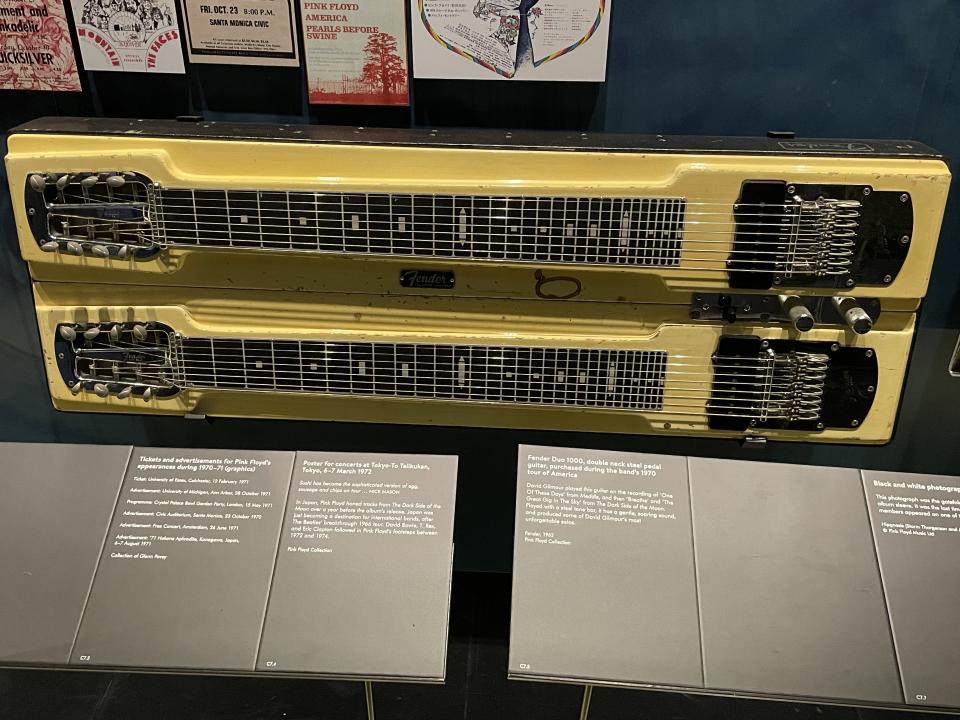
Chris Willman / Variety
Of the three surviving members, drummer Nick Mason had the most substantial involvement in the exhibition, and gets an official “exhibition consultant” credit. (He came to Hollywood for a preview event Thursday and its opening to the public Friday.) “Nick, of all the Pink Floyd, kept his own archive, and he didn’t throw a thing away,” says Powell, who goes by the nickname “Po.” “I mean, even his shirts from 1968” (as seen below). “His archive is phenomenal, and that was helpful.” But Waters and Gilmour provided substantial access, as well, even if their archives weren’t quite as museum-ready as Mason’s. “These are the original doodles and sketches and lyrics that Roger did for ‘The Wall,'” Powell says, pointing to some of the early scraps of lyrics for Waters’ magnum opus double-album. “You can see the influence from our childhoods, because we were all born around the end of the second world war — pictures of bombers dropping bombs, and children being talked down to by a teacher in school, and all this stuff that influenced him in terms of what he wrote in these lyrics. We found these in his house during lockup; there were piles of rat shit and detritus, and there they were, these lyrics, just sitting there.”
The fact that Powell and co-curator Paula Webb Stainton were finding new items to add even during quarantine — while the plan to bring “These Mortal Remains” from Europe to the U.S. got put on hold — speaks to a wealth of essentials and ephemera that the two programmers point out changes a bit from showing to showing.
“I mean, yesterday, we had an incident here,” says Powell. “A guy walked in with the annotated orchestral music for ‘The Wall,’ which Michael Kamen had written, and he had the book. I didn’t take it that seriously, that he was going to turn up with it, and suddenly there it was, this beautiful book. I immediately photographed it and sent it to Roger Waters and said, ‘Look what this guy’s found. What serendipity is that?’ And I sent it to Roger and he said, ‘Oh my God, that’s amazing.’ And was I told the guy bought it in a yard sale for $150. It’s got to be worth a fortune.” Also new of last week was a Panaflex camera used by director Alan Parker to shoot the film version of the “The Wall” that Panavision had just volunteered to drop off. “All these things come out of the woodwork. This is the fifth exhibition, and not one of them have I got bored yet, because there’s always something exciting that’s new.”
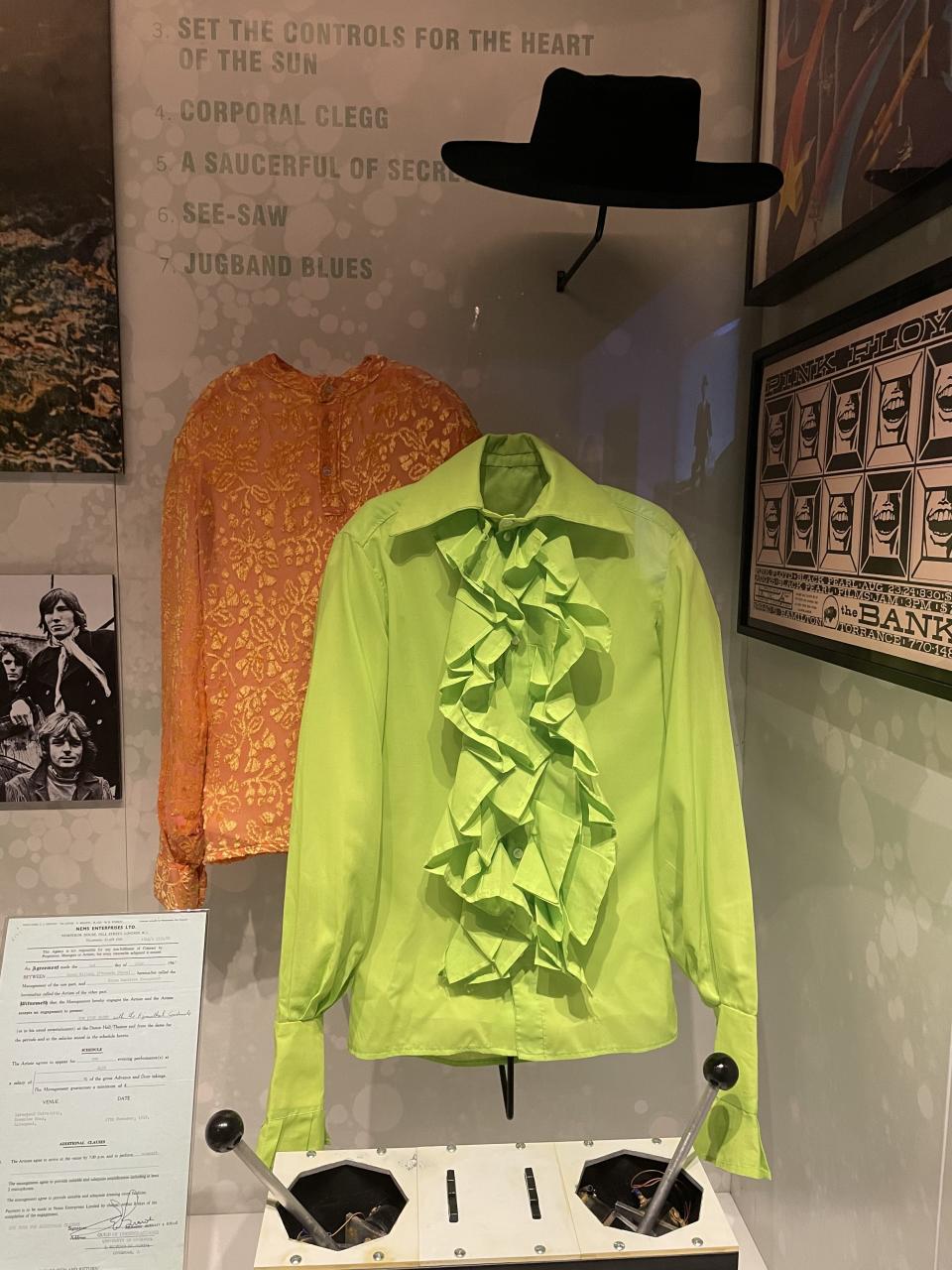
Chris Willman / Variety
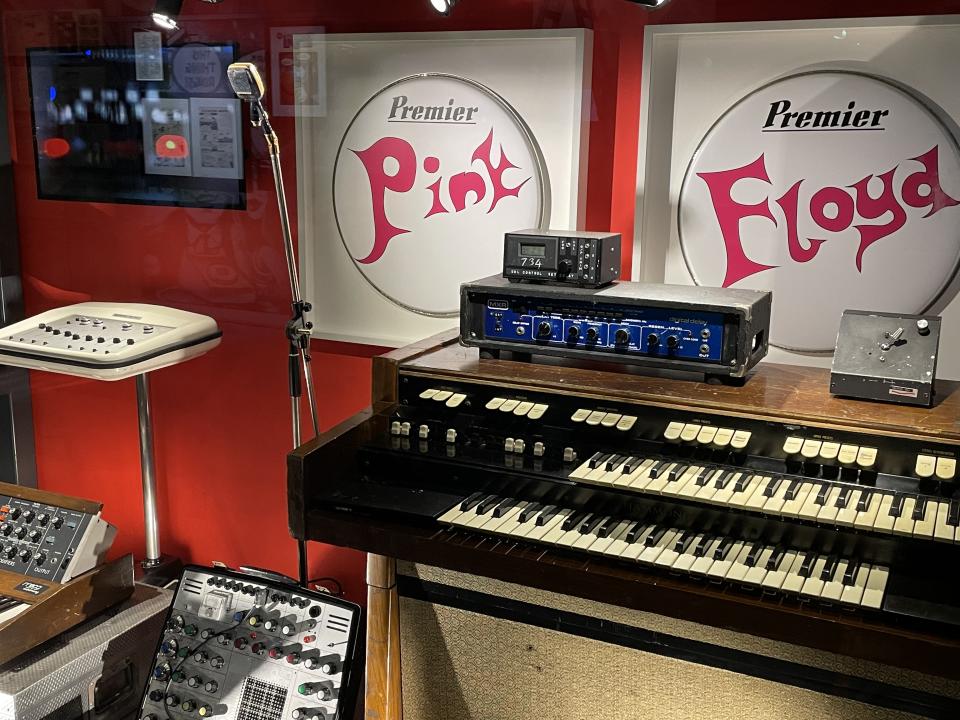
Chris Willman / Variety
The size of the exhibition at the 1935 movie theater that has been reconfigured into the Vogue Multicultural Museum, near the intersection of Hollywood and Highland Blvds., is about half the size of the space that was devoted to it when it originally opened at the Victoria and Albert Museum (aka the V&A) in London, England in 1987, following on the heels of a David Bowie exhibition there. But, points out Webb Stainton, “Although we scaled it down, we haven’t lost any artifacts. We always move them so that we can still use them.” It’s mostly just some of the experiential sections that had to be lost in the transition to America — although some of those were dropped due to COVID restrictions or just the fact that they attracted undue loitering in Europe.
“We also had a hologram of ‘Dark Side of the Moon’ that revolved in a space where you listened to it in 360 degrees,” says Powell of the London version, “and as great as it looked, unfortunately, people would sit there for hours watching everything, the whole album through, once, twice, three times. It was like, get out! it was not a very good idea.” “No, no, ” laughs Webb Stainton in agreement. “Some people were in there for four or six hours.”
The arguably more mundane aspects of the exhibit — early contracts and handwritten letters from the band’s early days — will be just as fascinating to hardcore fans as floating pigs. Says Webb Stainton, “One of the poignant pieces for me is this memo here, when basically the BBC asked which member of the band had freaked out and without explanation left the recording session for the radio show ‘Sunday Club.’ Despite the efforts of the other band members Syd Barrett could not be found. It just evokes the moment where it was beginning to not work.” There are sweeter mementos related to that period, too, like a self-portrait sketch Barrett drew of the band in its original incarnation, long before Gilmour took his place.
Other artifacts range from something as small as a string of pocket change used for a sound effect on the song “Money” to something as large as Easter Island-style heads used by the remaining members of the band for the cover of “The Division Bell” after Waters and the group indeed divided in the ’80s, along with visual signifiers as striking as a statue of a soldier with a knife in his back, part of the iconography for Waters’ last album with the band, “The Final Cut.”
<img class="size-full wp-image-1235056893" src="https://variety.com/wp-content/uploads/2021/09/IMG_2682.jpeg" alt=". - Credit: Chris Willman / Variety" width="1024" height="768" srcset="https://variety.com/wp-content/uploads/2021/09/IMG_2682.jpeg 4032w, https://variety.com/wp-content/uploads/2021/09/IMG_2682.jpeg?resize=150,113 150w, https://variety.com/wp-content/uploads/2021/09/IMG_2682.jpeg?resize=300,225 300w" sizes="(min-width: 87.5rem) 1000px, (min-width: 78.75rem) 681px, (min-width: 48rem) 450px, (max-width: 48rem) 250px" />Chris Willman / Variety
Audio-visual elements allow attendees to take a deeper dive by watching short films about periods in the band’s history on headsets provided at entry. What may be of the most interest to some is the thought and practicality that went into Floyd’s most famous album covers. Powell, with his Hipgnosis partner Thorgerson, worked on all of them from the second album, “Set the Controls for the Heart of the Sun,” through 1977’s “Animals.” Thorgerson returned to the fold years later, in the post-Waters era, followed by Powell being passed back the baton after the other Hipgnosis founder died in the 2000s.
One element fans may immediately gravitate to is a photograph in the “Animals” section that Powell shot five years ago at the site of the original “Animals” shoot that will be used as the cover of a long-awaited boxed set for that album due to now arrive in 2022. “I’ve reshot the ‘Animals’ cover, which was the pig over the power station,” says Powell. “So although it’s not been released yet, we thought, well, okay, let’s put the new cover up there. They’re building blocks of flats there, and I wanted to get this picture before the power station was surrounded completely — which it is now – by apartments to the point you can barely see it, and do something with it. Consequently there’s a re-release of the (original) album with a remix, coming out next year, and this is going to be the album cover. So there’s a history here going from way back when they started right up to the present day.”
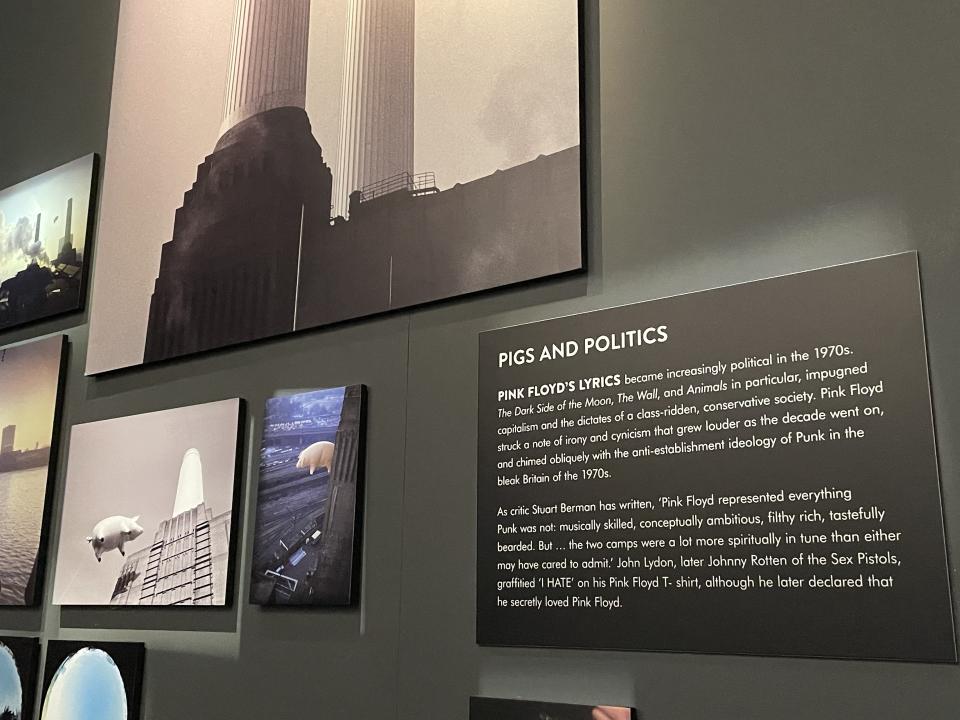
Chris Willman / Variety

Chris Willman / Variety
Says Powell, “There’s 400-500 objects in this exhibition, which is a lot. Personally, what I hope is that for the uninitiated about Pink Floyd, they come and they learn something. There’s a huge amount of young kids these days where a Floyd album was a favorite of their father or their father’s father and now it’s theirs, but they know absolutely nothing about the history of the band, and you see them absolutely really engrossed.”
Webb Stainton agrees that the appeal is hardly limited to O.G. fans. “The demographic that has come to visit the exhibition is families, and it is the young in the teens and the twenties discovering it,” she says. “And of course, if they want to, they can see Nick Mason with his band Saucerful of Secrets, because he plays all the early Pink Floyd. He toured here a couple of years ago and they’re going to tour again, so come see the exhibition and then go see Nick next year.”
Powell was also pleased with the reaction of a different demographic. “In the room where ‘The Wall’ (is commemorated) with the teacher (inflatable), I had one of the carpenters yesterday say, ‘Do you know this room’s really spooky? It’s all a bit spooky in here.’ I was thinking, great! This is a big, burly carpenter who found it a bit frightening. Or maybe it was just the sight of me coming in with a walking stick.”
To read an extensive Q&A with Powell about his and Thorgerson’s work on Floyd album covers like “Atom Heart Mother,” “The Dark Side of the Moon,” “Wish You Were Here” and “Animals,” click here.
Correction: A previous version of this story referred to a live-album component of an upcoming “Animals” boxed set. A live album is not part of the release.
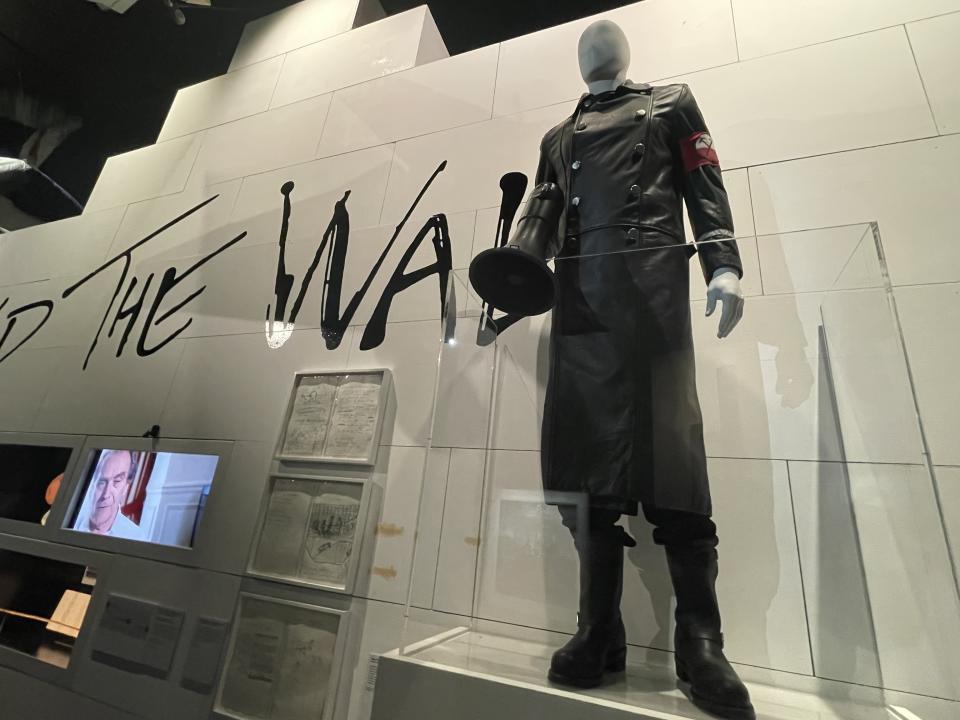
Chris Willman / Variety
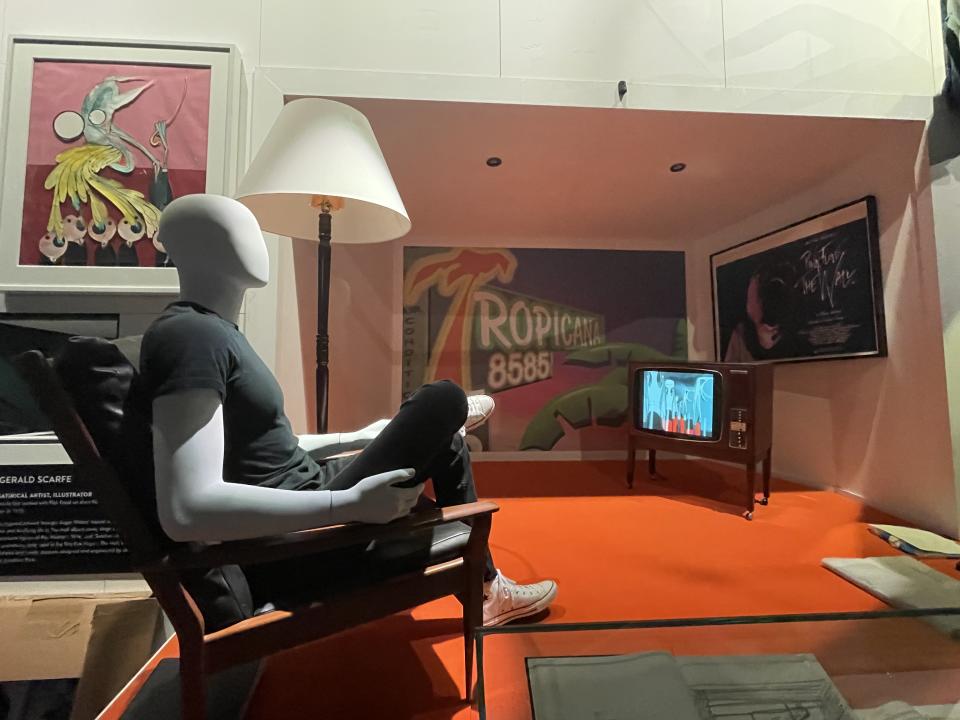
Chris Willman / Variety
Best of Variety
These Celebrity Memoirs Were All Instant Best-Sellers: From Seth Rogen to Cicely Tyson
The Best Labor Day Sales to Shop This Weekend: Le Creuset, Nespresso, North Face and More
Sign up for Variety’s Newsletter. For the latest news, follow us on Facebook, Twitter, and Instagram.

